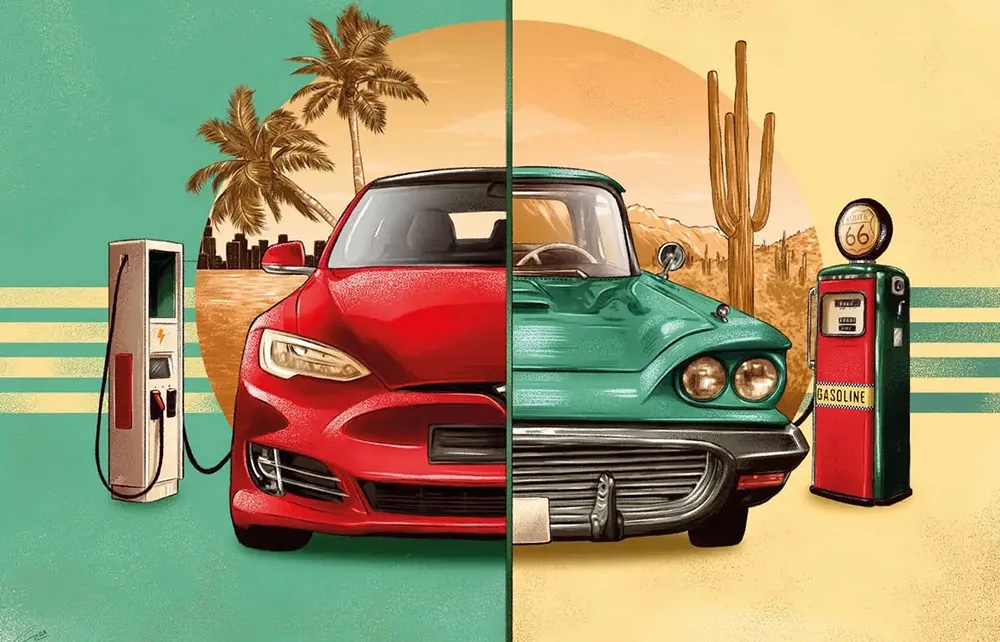
I once heard of a couple who were teachers in their mid-fifties. Having pooled the proceeds from selling both their flats when they moved in together in the 1990s, they found themselves in the happy position of owning a mortgage-free west London house worth more than £1 million. He was originally from Norfolk, and was eager to move back to a larger and prettier country home costing half the price. They could then bank £500,000 in tax-free profits, retire early and travel the world. She, however, was a lifelong Londoner who refused to leave London.
Not knowing all the facts, I cannot say who was right. But it might help to consider the inverse. Imagine a couple living in a large house in Norfolk who win £500,000 on the lottery. Can you see them tearfully clutching their cheque and declaring: ‘Bliss! Now we can move to a tiny house in Acton and work for the next ten years’?
This mind trick, practised by the late Charlie Munger, Warren Buffett’s right-hand man, simply involves considering the mirror image of any decision: ‘Always invert’ was his mantra. I apply this to air fryer sceptics, who smugly pronounce it is ‘just a small convection oven’. No, a convection oven is merely a needlessly large and inefficient air fryer. When do you need to cook a swan or an ostrich?
So, I ask the electric car sceptics among you to picture a parallel universe where all cars are electric, when a rogue German engineer invents the internal combustion engine. ‘This so-called engine you’ve developed, Fritz, tell me exactly how it works. You see, we already have electric motors where an electric charge delivers forward momentum. Michael Faraday nailed that puppy in 1822. How does your engine work exactly?’
‘Well, first you fill your car with 20 gallons of an inflammable liquid. We then set fire to this liquid in a series of controlled explosions within cylinders linked to a crankshaft. You’ll need a gearbox, because this engine only works at high revs. Then these other pipes and wires and 200 other additional moving parts keep everything suitably lubricated and cool.’
‘Got it. Now our electric motors convert energy to movement at about 80 per cent efficiency. How efficient is yours?’ ‘Um, about 20 per cent.’ ‘Mm-kaaaay… So presumably it is quieter and more powerful than an electric motor, and delivers better acceleration?’ ‘Er, no.’ ‘Can it run on energy produced by the sun and the wind, or from nuclear power stations or anything else?’ ‘No, but the liquid you need to burn is readily available in perilous offshore locations and from many totalitarian states.’
The electric motor is perhaps the most beautifully simple and elegant device ever invented
‘Uh huh? But you can refuel at home, right?’ ‘No, that would be crazy. No one’s going to keep 2,000 gallons of petrol under their house. But we could open 8,000 brightly lit forecourts all over the country where you could buy a Ginsters or Red Bull on a two-for-one.’
‘Help me out here, Fritz. Where’s the upside?’ ‘Well, if you have a really strong bladder, you can go 80 miles further between recharging.’
There is a certain kind of religious person who is not much interested in God or Jesus and stuff, but who gets hugely excited by chasubles, reliquaries or the Council of Chalcedon in 451 ad. In the same way, there is a kind of car person who isn’t interested in transportation, but gets excited in the presence of elaborate machinery. I get this. But the plain fact remains that the electric motor is perhaps the most beautifully simple and elegant device ever devised by the wit of man.
I parked my car in Albemarle Street in the other day. I’d wanted to use the chargers opposite the Royal Institution, where Faraday’s first electric motor is on display downstairs, but annoyingly I was at 72 per cent and so had no need. My little electric pilgrimage will have to wait.








Comments